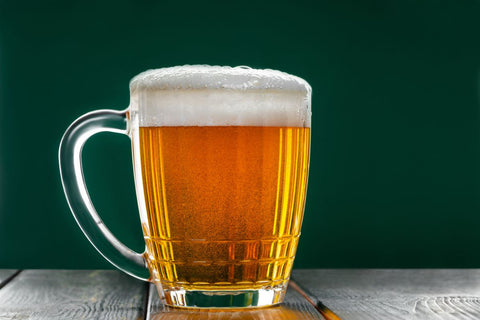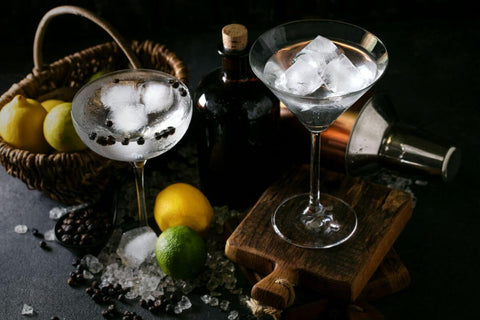How should you talk about the different types of wine?
- Know the primary types
- Ask what they usually enjoy
- Be specific about taste, flavor, and feel
- Familiarize yourself with the wines in your region
- Know what dishes are best to pair with wines
We understand that talking about wine can sometimes be nerve-wracking, but there’s really nothing to fear! We're here to empower you with the confidence to describe your wine of choice with flair and finesse. No need to get lost in a labyrinth of wine terminology or worry about saying the wrong thing.
So, get ready to dive into the delightful world of imported wine and discover how to talk about the different wine types like a true connoisseur. After all, it will be your passport to unlocking a whole new level of wine appreciation.
Know the Primary Types

In the world of wine, every sip is a journey of discovery. As a starter, you need to indulge in a symphony of flavors and aromas that wines offer—by starting to familiarize yourself with their primary types that will definitely take your palate on an exhilarating adventure.
Red Wine
Red wine is known for its rich, bold flavors. It ranges from light and fruity to full-bodied and tannic, which offers a broad spectrum of tastes and aromas. Some of the popular red wines are Cabernet Sauvignon, Merlot, Pinot Noir, and Syrah.
White Wine
White wine is made from yellow or green delicious grapes. Its flavors vary from crisp and refreshing to creamy and aromatic. They can be dry or sweet. Its popular examples are Chardonnay, Sauvignon Blanc, Riesling, and Pinot Grigio.
Rosé Wine
Rosé wine gets its lovely pink hue from limited contact with grape skins during the winemaking process. It offers a delightful balance between red wine's fruitiness and white wine's freshness. They are perfect for warm weather and can be enjoyed from bone-dry to slightly sweet taste.
Sparkling Wine
Sparkling wine is synonymous with celebration and bubbles! This effervescent delight can be white or rosé and is known for its lively carbonation.
Dessert Wine
As the name suggests, dessert wines are often enjoyed after a meal as a sweet treat. They have a higher sugar content compared to other primary styles and are made from grapes that have been partially dried or affected by noble rot.
Ask What They Usually Enjoy

Now that you've acquainted yourself with the primary styles of wine, it's time to dive into the exciting world of wine conversations!
Strike up a conversation with your friends or fellow wine enthusiasts about their wine preferences. Are they seeking a perfect wine for special occasions or are they eager to embark on a journey of new and exciting flavors? Or perhaps they can’t get enough of their favorite wines.
By initiating these conversations, you will have the opportunity to share your expertise and recommend sensational wines, and demonstrate your genuine interest and expertise in the world of wines.
Be Specific about Taste, Flavor, and Feel
Diving into the exciting world of taste, flavor, and feel of wines is an absolute must. It lets you express your wine preferences with confidence. By delving into the intricate nuances of wines, you can skillfully express what tickles your taste buds and satisfies your cravings.
But that’s not all! You should also explore the characteristics of wines. This way, you can showcase your unbridled passion for it, which ignites others’ curiosity and encourages them to explore the world of wine, too! Here are some important points for you to know:
- Varietal: Wine can be categorized by the grape variety from which it is made. Each grape variety has its own distinct flavors, aromas, and characteristics.
- Body: Refers to the weight and texture of the wine on the palate. Wine can be light-bodied, medium-bodied, or full-bodied. Light-bodied wines feel delicate and refreshing, while full-bodied wines are more substantial and bold.
- Color: Wine can vary in color, ranging from pale yellow or straw for white wines to deep red or purple for red wines. Rosé wines have a pink hue.
- Aroma and Bouquet: The aroma of a wine refers to the scents perceived on the nose, which can include fruit, floral, herbal, or earthy notes. Bouquet refers to the more complex and developed aromas that develop as the wine ages.
- Taste Profile: The taste profile encompasses various elements, including sweetness, acidity, tannin (in red wines), and alcohol content. It also includes flavor characteristics like fruitiness, spiciness, herbal notes, or oak influence.
- Acidity: Acidity refers to the crispness or liveliness of the wine. Wines with higher acidity feel fresh and vibrant on the palate.
- Tannins: Tannins are compounds found in red wines that contribute to the wine's structure and texture. They can create a drying or astringent sensation in the mouth.
- Finish: The finish refers to the lingering taste and sensations after swallowing the wine. A long finish suggests complexity and quality.
Familiarize Yourself with the Wines in Your Region
Familiarizing yourself with the wines in your region is an exhilarating journey that promises a myriad of rewarding experiences. It helps you embrace the authentic flavors and cultural heritage of your region’s wines that make them truly special. Here are some of the most popular wine regions:
- Bordeaux, France: Known as the pinnacle of wine production, Bordeaux produces renowned red Bordeaux blends with Cabernet Sauvignon, Merlot, and Cabernet Franc grapes. These wines are complex, elegant, and age gracefully. Bordeaux also excels in white wines, especially from Sauternes and Graves.
- Napa Valley, California, USA: This prestigious wine region is acclaimed for its bold Cabernet Sauvignon wines, showcasing rich flavors, fruit characteristics, and integrated tannins. Napa Valley also produces high-quality Chardonnay, Merlot, and Bordeaux-style blends. Its favorable climate and diverse terroir contribute to its top-notch reputation.
- Tuscany, Italy: An iconic region for exceptional red wines, Tuscany thrives on the Sangiovese grape variety seen in Chianti, Brunello di Montalcino, and Vino Nobile di Montepulciano. Tuscany's wines are elegant, structured, and possess distinctive flavors influenced by the region's terroir. Notable Super Tuscan blends, often with international grape varieties, are also produced.
Additionally, it's a delightful way to connect with your local community and support the talented winemakers, vineyards, and businesses who pour their passion into crafting exceptional wines that you enjoy.
Know What Dishes are Best to Pair with Wines

For many people, wine isn’t just a drink on the side, but an essential part of their dining experience. It’s because, unlike many other alcoholic drinks, wine is incredibly versatile and can be paired with certain foods to enhance not only the food itself—but the wine, too.
Make sure to learn about what dishes are best to pair with wines so you can recommend them to your friends or loved ones. For instance, Chardonnays are often matched with seafood while Sauvignon Blanc is great with a big bowl of pasta. Meanwhile, many red wines go with red meat, and dessert wines are a great sip alongside a big piece of cake.
So, as long as you do your research when it comes to wine and the best dishes to pair it with, you’ll be talking like a pro in no time!
Key Takeaway
Talking about wines is an exciting journey that lets you explore their diverse world. While it's not necessary to become an expert, having a basic understanding of wines can enhance your enjoyment and appreciation.
So, embrace the opportunity to expand your wine knowledge, share your passion, and savor the delightful experience by learning how to talk about different wine types like a pro.
If you’d like to try imported wines in the Philippines, you’re in the right place! Ralph’s Wines and Spirits offers imported and satisfying wines that you can sip, enjoy, and pair with your favorite dishes! Go to Ralph’s Wines and Spirit’s online store here to purchase. Cheers to becoming a wine aficionado!



